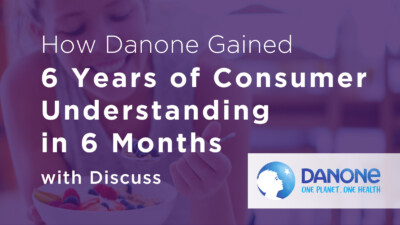Research Reinvented: Forrester on how AI has transformed research in just a few years
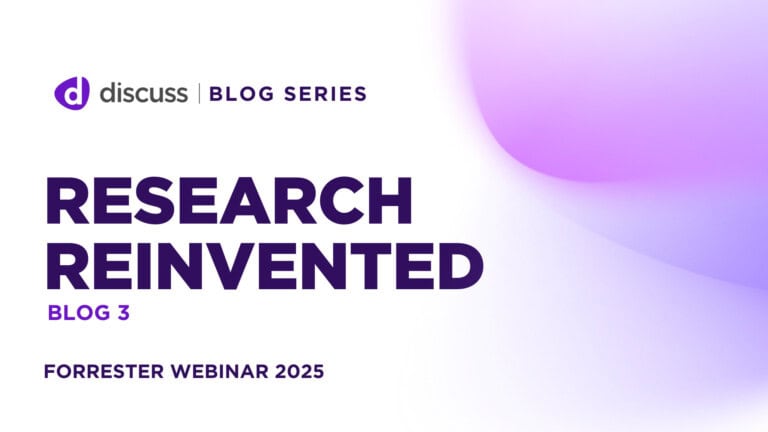
This is the third article in our five-part series based on the webinar we presented with Forrester and Quadrant Strategies, Research Reinvented: How to Master GenAI and Ensure You’re Not Left Behind. In this third post, we’ll examine how AI has moved from early experiments to meaningful impact across the research lifecycle and what that means for teams today.
From curved screens to rollable futures
Robin Lindberg of Quadrant Strategies offered one of the clearest ways to think about AI’s rise in research: compare it to the evolution of screens.
First came curved TVs. Interesting, a little flashy, but not transformative. That was AI in research two years ago: novel improvements, yes, but they didn’t change how projects were run.
Then came foldable phones. Suddenly, more screens could fit in your pocket. That’s where AI is today: practical, useful, woven into workflows. Think AI moderation, the ability to chat with data, and task-specific agents.
And on the horizon? Rollable screens: technology that completely redefines how we use the medium itself. That’s AI’s next stage.
“The curved screen is probably what we had two years ago… We’re more at the foldable screen right now… Imagine a few years from now when we get to the rollable screen of AI.” — Robin Lindberg
From summaries to integration
Rowan Curran, Principal Analyst at Forrester, traced a similar arc without the metaphors. Early on, AI models sat on their own, producing summaries. Helpful, but siloed. Now, AI is embedded across workflows: planning, moderation, analysis, and reporting.
Generative Q&A, retrieval augmented generation (RAG), and agentic systems are no longer pilot projects. They’re part of everyday research operations.
The big shift? Moving from isolated insights to insights connected to action. Instead of sitting at the edges, AI is increasingly powering the middle of the process.
“It’s been quite an advance… going from summaries that provided some efficiencies to real impact across multiple points of the research lifecycle.” — Rowan Curran, Forrester
Changing daily work habits
Robin described what that means for leaders managing multiple projects. He used to slog through transcripts and decks just to catch up. Now, he chats with the data directly.
Instead of reading hours of material, he asks the AI to summarize specific sessions or highlight what matters most. That changes not just efficiency, but how he engages with the work.
“No longer do I have to go and review hours of transcripts or video… Instead, I just ask the AI to summarize what I need to know to get where I need to be.” — Robin Lindberg, Quadrant Strategies
Multiply that across teams, and the efficiency gains are massive. But the deeper point: experts are freed to focus on strategy and storytelling, not clerical tasks.
Beyond efficiency: clients are pushing
Another sign of how fast things have changed? Clients. Two years ago, most weren’t asking about AI. Today, many are pushing agencies and partners to lead with it.
As Robin put it, “It’s also a sales driver. If you don’t apply AI at all, there’s a good chance you’ll be left behind just because of client demand right now.”
That’s a major shift: what was once optional is now expected. Not adopting AI is just inefficient. And it risks lost business.
Use cases already reshaping research
Rowan pointed to several live examples of how AI is reshaping the field:
- Proprietary knowledge management. Companies with large research archives are using RAG to avoid rework and to focus new studies on what matters most.
- Synthetic moderators. Advances in model orchestration make it possible to train with synthetic respondents or even run interviews in specific contexts.
- Lifecycle impact. AI is embedded from study design through to analysis and reporting.
The stakes have changed
Research has always been about balancing efficiency and depth. AI is rewriting that balance. Manual tasks like coding and transcript review are no longer bottlenecks. Human expertise is redirected toward judgment, alignment, and storytelling.
But the flip side is clear: those who ignore AI risk obsolescence. The market won’t wait for late adopters.
As Rowan reminded the audience, adoption has to come with trust and transparency. The technology is powerful, but it still needs careful human stewardship.
The Discuss perspective
We’ve lived this journey too. Our first AI features focused on time-saving summaries – our “curved screen” moment.
Today, our AI Agents span the lifecycle:
- Project Agent speeds up setup, from guides to recruiting.
- Interview Agent scales conversations across languages and markets.
- Insights Agent distills transcripts into themes, highlight reels, and quotable takeaways.
That’s the foldable-screen stage: tools that genuinely change how teams work. And like Robin’s analogy, we’re building toward the rollable-screen future – where orchestration across agents unlocks even more value.
But through it all, one principle stays constant: AI amplifies human understanding. It doesn’t replace it.
Your next step
To hear Rowan and Robin unpack these changes in their own words, watch the webinar recording. Their perspectives are essential for anyone navigating AI’s rapid integration into research.
And don’t miss the fourth post in this series, where we’ll explore how to scale global qualitative research while preserving the human connection that makes qual so powerful.
Ready to unlock human-centric market insights?
Related Articles
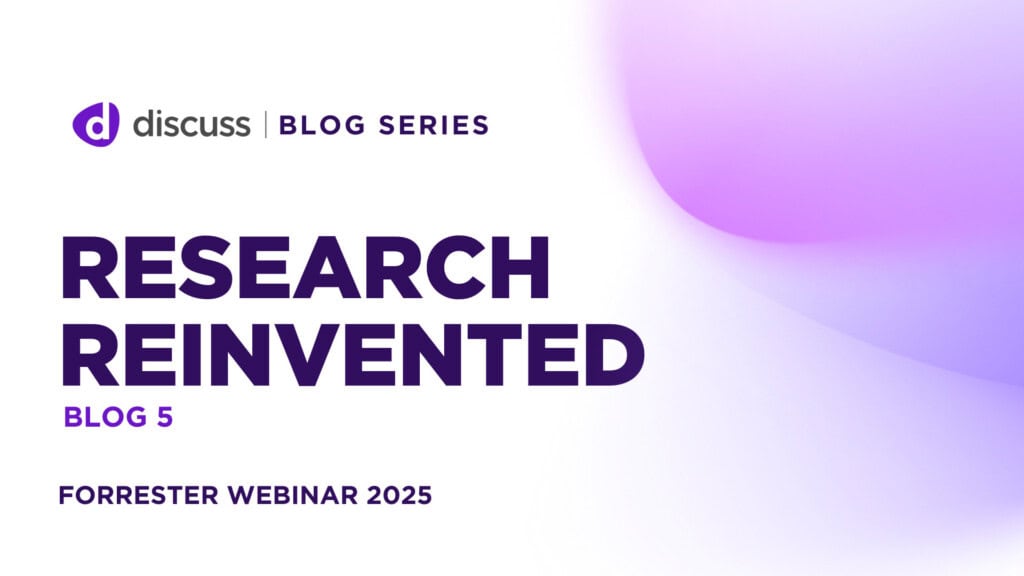
Research Reinvented: Forrester on why researchers won’t be replaced by AI
This is the last article in our five-part series based on the webinar we hosted with Forrester and Quadrant Strategies,…
This is the last article in our five-part series based on the webinar we hosted with Forrester and Quadrant Strategies,…
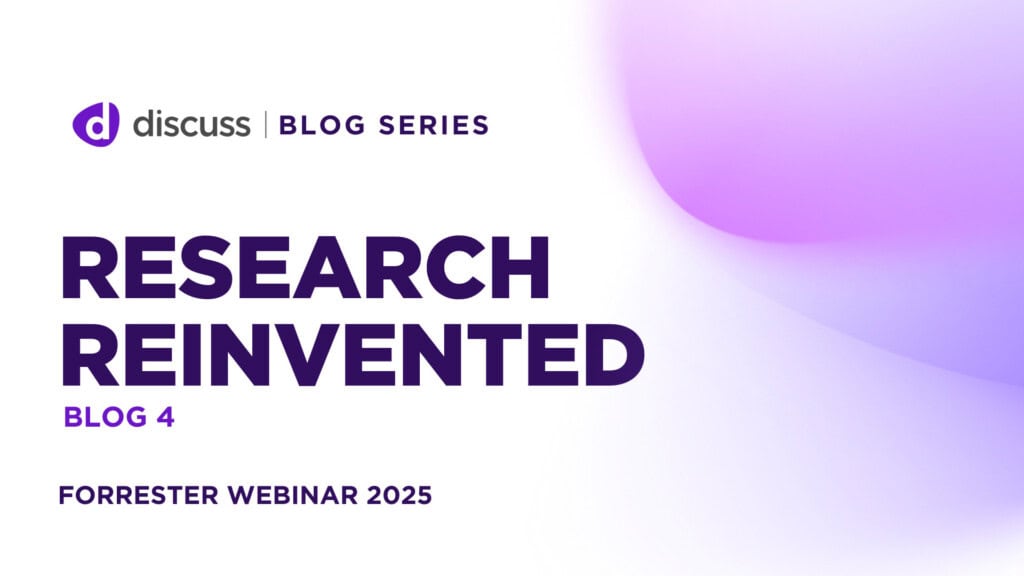
Research Reinvented: Scaling global qualitative research without losing the human touch
This is the fourth article in our five-part series based on the webinar we hosted with Forrester and Quadrant Strategies,…
This is the fourth article in our five-part series based on the webinar we hosted with Forrester and Quadrant Strategies,…
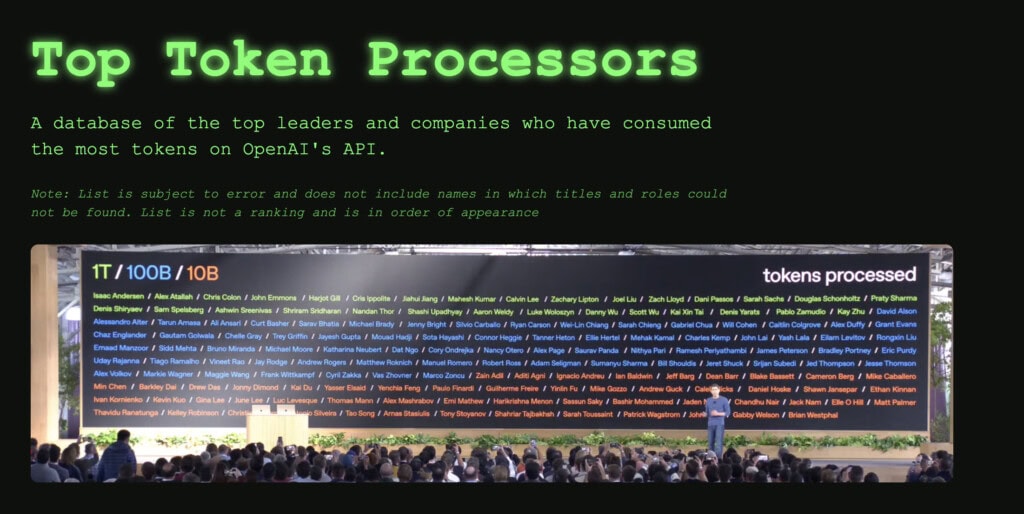
10 Billion Tokens Later: Why Discuss Was Recognized by OpenAI and What It Means for the Future of Qualitative Research
10 Billion Tokens Later: Why Discuss Was Recognized by OpenAI and What It Means for the Future of Qualitative Research…
10 Billion Tokens Later: Why Discuss Was Recognized by OpenAI and What It Means for the Future of Qualitative Research…

